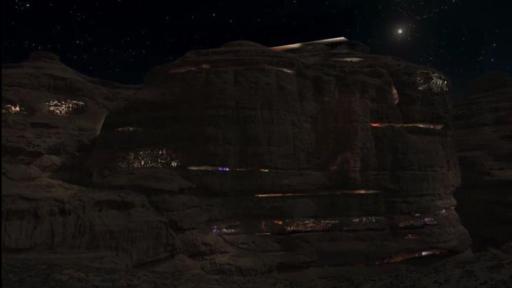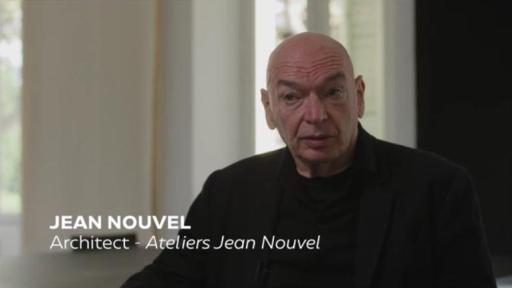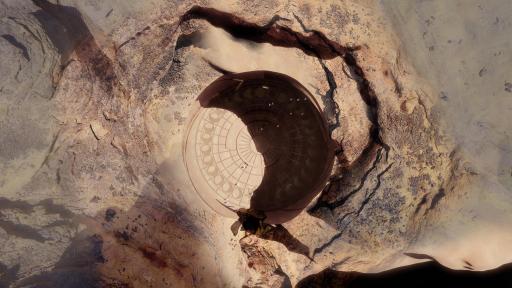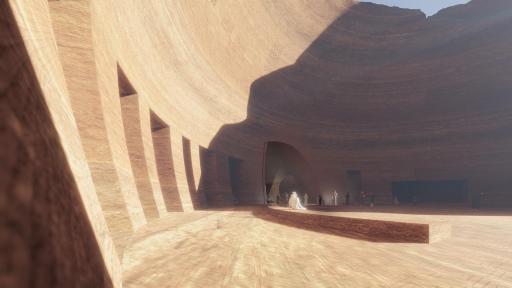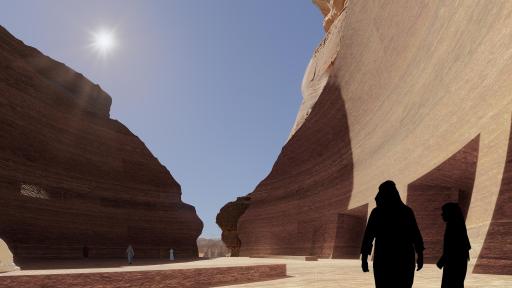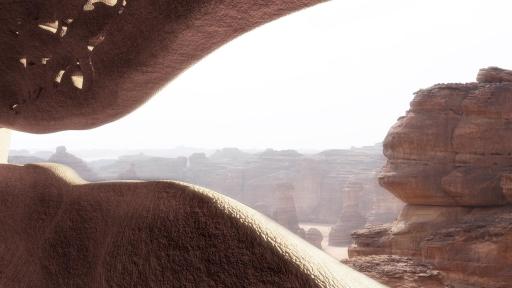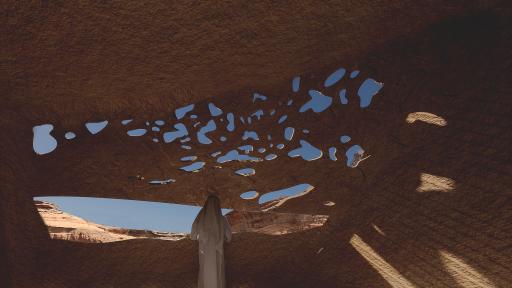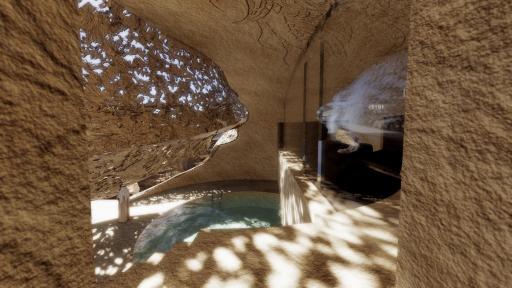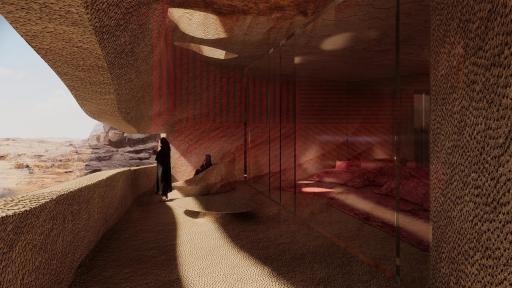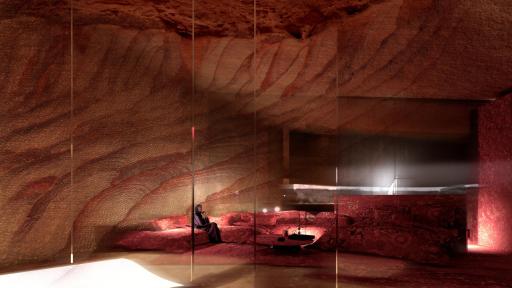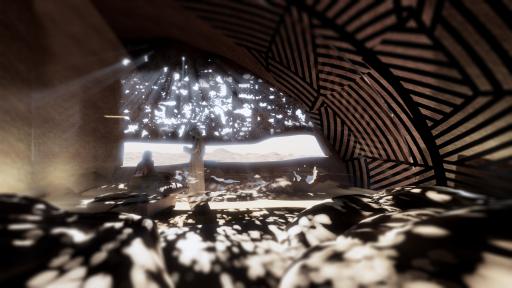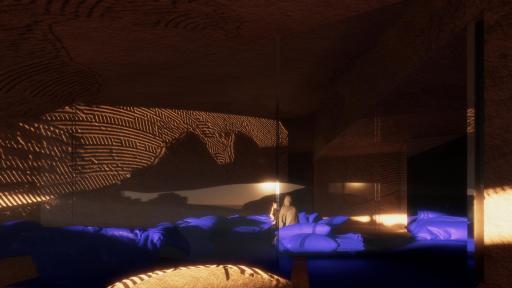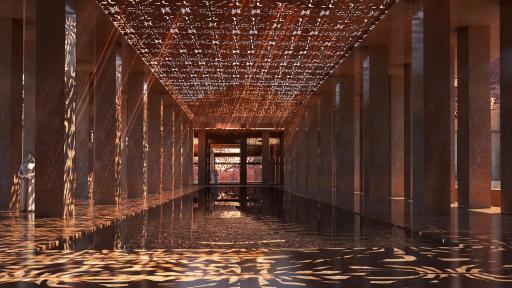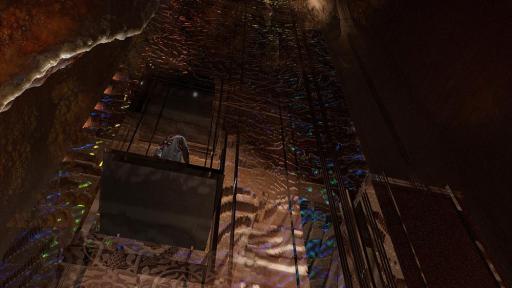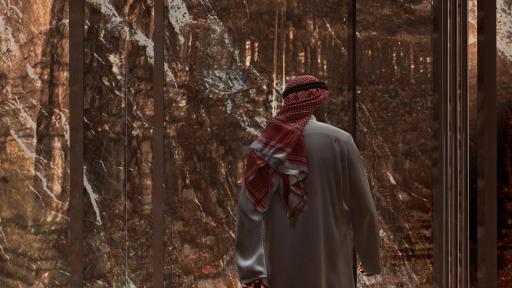New Jean Nouvel concept designs unveil a new era in architecture: a world-first ‘masterpiece’ resort hidden within the rock dwellings of AlUla, Northwest Arabia
New Jean Nouvel concept designs unveil a new era in architecture: a world-first ‘masterpiece’ resort hidden within the rock dwellings of AlUla, Northwest Arabia
All images can be found at the end of the press release.
- This world-first in contextual architecture will take visitors on a vivid sensory and emotional journey through time, ushering in a new era in design where every future detail will tell a story of the landscape’s past.
- With the concepts taking a curatorial approach, architect Jean Nouvel celebrates AlUla as, “the coming together of a landscape and history; The history of past civilisations in an extraordinary landscape.”
- Designs show Jean Nouvel’s modern take on millennia-old Nabataean ways of living with monumental designs carved into the rocks that sustainably respect and preserve AlUla’s landscape by drawing on concepts from the nearby Hegra, Saudi Arabia’s first UNESCO World Heritage Site.
AlUla, Saudi Arabia, 27 October 2020 – New concept designs for the Sharaan by Jean Nouvel resort revealed today offer a deeper understanding of the architect’s daring vision for AlUla, the cultural oasis in north-west Arabia.
Located deep within the Sharaan Nature Reserve, the designs draw on the nearby Nabataean wonders of Hegra, Saudi Arabia’s first UNESCO World Heritage Site. In a world-first, this 2,000-year-old architectural legacy is being revived by Jean Nouvel for potentially the first time since the Nabataeans carved into the region’s millions-of-years-old sandstone rock.
As the concepts were unveiled, architect Jean Nouvel described AlUla as “The coming together of a landscape and history; The history of past civilisations in an extraordinary landscape – the only place to create such a masterpiece.”
Nouvel emphasised the importance of preserving such a unique landscape: “AlUla is a museum. Every wadi and escarpment, every stretch of sand and rocky outline, every geological and archeological site deserves the greatest consideration. It’s vital we keep all its distinctiveness and conserve its attractiveness, which largely rests on its remote and occasionally archaic character. We have to safeguard a little mystery as well as the promise of discoveries to come.”
Nouvel’s commitment to respecting AlUla’s landscape and ancient heritage has not meant shying away from modern architectural ideas. “AlUla deserves to acquire a degree of modernity,” he suggests. “Envisioning the future is a never-ending obligation that requires us to be fully alive to places in the present as well as conjuring up the past.”
Jean Nouvel explains how he’s adapting old ways of life to our modern world, minimising the impacts on natural and urban landscapes. To do this Nouvel has introduced a new typology of architecture never seen before, using abstraction, sculpting within the landscape itself rather than competing with it. Inspired by the Nabateans, it plays on the old ways of living to build on the present and meet the challenges of the future. Jean Nouvel integrates the way Nabateans interacted with their environment, both verticality and horizontality, to reconnect to the earth and build sustainable habitats, away from the heat of the summer and the cold of the winter.
Nouvel views this resort as an opportunity to bring to life a strong spatial, sensorial and emotional experience on the borders of nature, architecture and art – where the sound, musicality, harshness, tactility, power and complexity of nature are everywhere, from finely chopped stones on balconies to the singular granularity of each rock wall, all becomes an artwork in itself.
“Our project should not jeopardise what humanity and time have consecrated,” emphasises Nouvel, “Our project is celebrating the Nabateans spirit without caricaturing it. This creation genuinely becomes a cultural act.”
Taking on a curatorial approach in the museographical sense, Jean Nouvel has created public spaces geared towards the joy of living there, by day, by night, with all the various colours, light, shadow, wind, torrential rain, and the passage of time. He invites travellers to embark on a journey through thousands of years of civilisations and geographical strata within every detail of his designs, from the permanent feel of the rocks to the soft comfort of the armchairs, sofa, and seats.
The end result will see guests immersed deep within in a memorable journey through time and space, offering a true discovery of AlUla’s essence. Through immersive experiences in Sharaan’s wilderness, visitors will have personalised exposure to the hundreds of archaeological sites within AlUla. Yet, this level of luxury will not be at the cost of the natural landscape, as the new resort will draw on emission-free power and new standards in sustainability.
The Sharaan by Jean Nouvel Resort will be a key element of RCU’s strategy to develop AlUla as a global destination for culture, heritage, and eco-tourism. It is designed within The Charter of AlUla, a framework document that includes 12 guiding principles that commits The Royal Commission for AlUla (RCU) to long-term future development. It will also contribute to the region’s diversified economy through a Retreat Summit Centre and restaurants.
Amr AlMadani, CEO of RCU, said: “These concepts, which showcase Jean Nouvel’s masterly innovation in architecture, underscore our commitment to developing AlUla as a global tourism destination without compromising the history, heritage, and landscape of AlUla. We are a destination built by artists. Sharaan by Jean Nouvel will build on that legacy to become a timeless landscape-architecture that will last forever – a gift to the world.”
NEW CONCEPT DESIGNS - DOWNLOADABLE ASSETS
NOTE TO EDITORS:
- The new Jean Nouvel resort, set to be completed by 2024, will include 40 guest suites and three resort villas. A retreat summit centre near the resort will feature 14 private pavilions.
- AlUla will be re-opening its heritage sites on 30 October in a significant step to realise its tourism ambitions, including the UNESCO World Heritage Site, Hegra; the ancient kingdom of Dadan; and the whispering canyons of Jabal Ikmah. Bookings will be available on the Experience AlUla booking site: https://experiencealula.com/
- By 2035, RCU expects to host two million visitors annually.
- The new resort is part of the development of AlUla guided by 12 strategic principles drawn from the Commission’s Framework Plan and Charter. This approach to development balances innovation with heritage, arts and culture while unlocking economic potential to provide new opportunities for the local community.
- The collaboration further supports RCU’s Cultural Manifesto for AlUla, which details the principle cultural landscape developments planned for the area over the next 10 years.
- AlUla’s human history began more than 200,000 years ago, yet only recently has modern tourism begun to discover the depth and diversity of its experiences and attractions.
- Archaeologists from Saudi Arabia and around the world are rediscovering this cultural landscape as RCU supports the
economic diversification, community empowerment and heritage preservation priorities of the Kingdom of Saudi Arabia’s Vision 2030 programme.
For RCU media enquiries
Contact RCU Public Relations team [email protected]
For AJN enquiries
Contact Thomas Lozinski [email protected]
ABOUT SECTION:
About AlUla
Located 1,100km from Riyadh in north-west Saudi Arabia, AlUla is a place of extraordinary natural and human heritage. The vast area, covering approximately 23,000 km², includes a lush oasis valley, towering sandstone mountains and ancient cultural heritage sites dating back thousands of years.
The most well-known and recognised site in AlUla is Hegra, Saudi Arabia’s first UNESCO World Heritage Site. A 52-hectare ancient city, Hegra was the principal southern city of the Nabataean Kingdom and is comprised of more than 100 well preserved tombs with elaborate facades cut into sandstone outcrops. Current research suggests Hegra was the most southern outpost of the Romans after conquering the Nabataeans in 106 CE.
In addition to Hegra, AlUla is home to a series of fascinating historical and archaeological sites such as: Ancient Dadan, the capital of the Dadan and Lihyan Kingdoms, which is considered one of the most developed 1st-millennium BCE cities of the Arabian Peninsula; thousands of ancient rock art sites and inscriptions; and Hijaz Railway stations.
About The Royal Commission for AlUla
The Royal Commission for AlUla (RCU) was established by royal decree to preserve and develop AlUla, a region of outstanding natural and cultural significance in North-West Saudi Arabia. RCU’s long-term plan outlines a responsible, sustainable, and sensitive approach to urban and economic development, that preserves the area’s natural and historic heritage, while establishing AlUla as a desirable location to live, work, and visit. This encompasses a broad range of initiatives across archaeology, tourism, culture, education and the arts, reflecting a commitment to meeting the economic diversification, local community empowerment, and heritage preservation priorities of the Kingdom of Saudi Arabia’s Vision 2030 programme.
About Ateliers Jean Nouvel (AJN)
Ateliers Jean Nouvel (AJN) is a world-renowned design firm that gathers a multicultural team of 130 persons from more than twenty countries. AJN combines the disciplines of architecture, urban planning, interior design, landscape design, graphic design, and product design into a single integrated practice. AJN’s diverse, world spanning portfolio includes museums, concert halls, conference centers, theaters, hotels, residential buildings, office buildings, commercial centres, and private residences.
About Jean Nouvel
Born in Fumel, France, in 1945. Jean Nouvel was assistant to the architect Claude Parent and inspired by urban planner and essayist Paul Virilio, he started his first architecture practice in 1970. His strong stances and somewhat provocative opinions on contemporary architecture in the urban context together with his unfailing ability to inject originality into all the projects he undertakes have formed his international image. His works have gained world-wide recognition through numerous prestigious French and International prizes and rewards, including the prestigious Pritzker Prize awarded in 2008.













